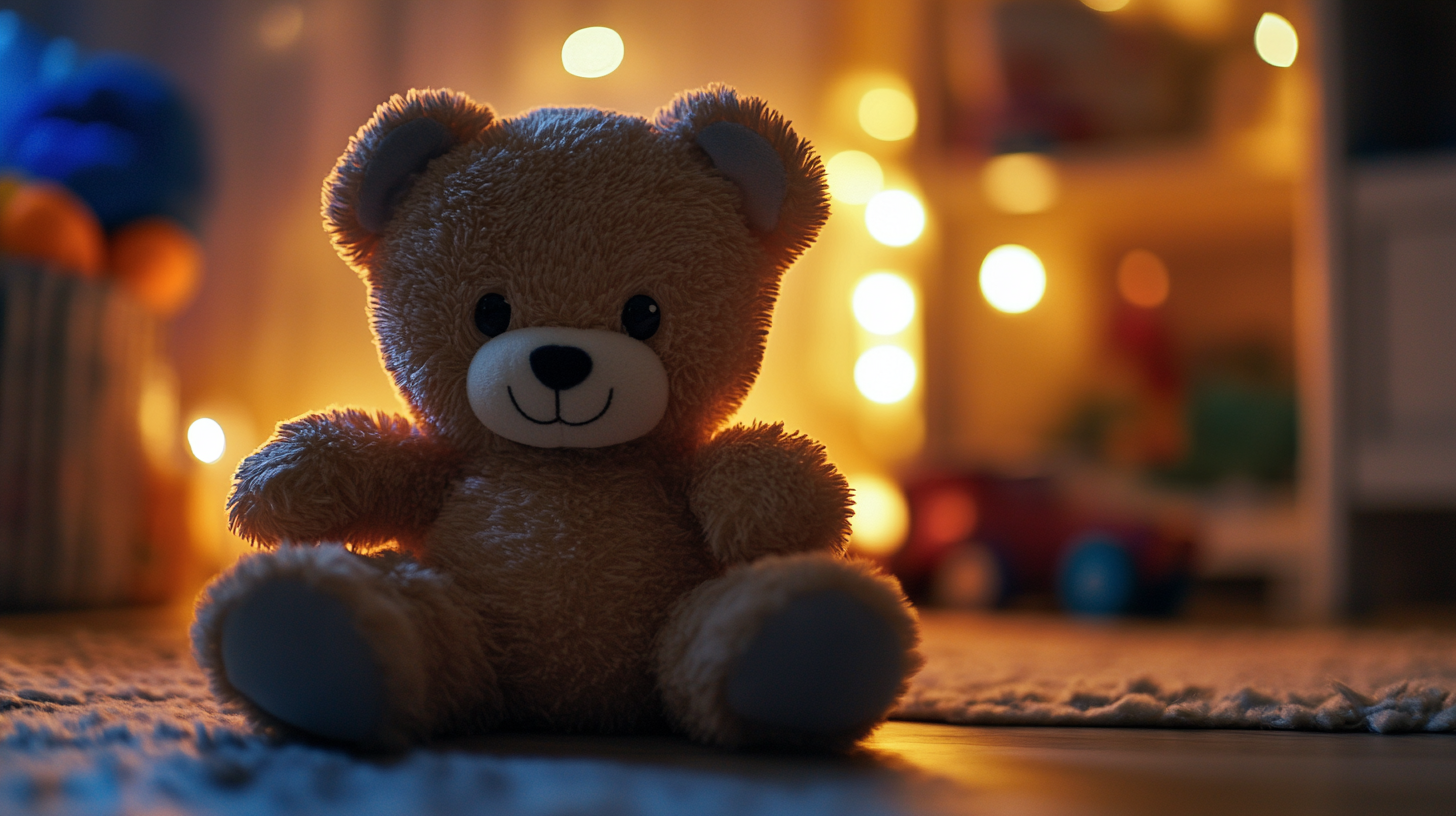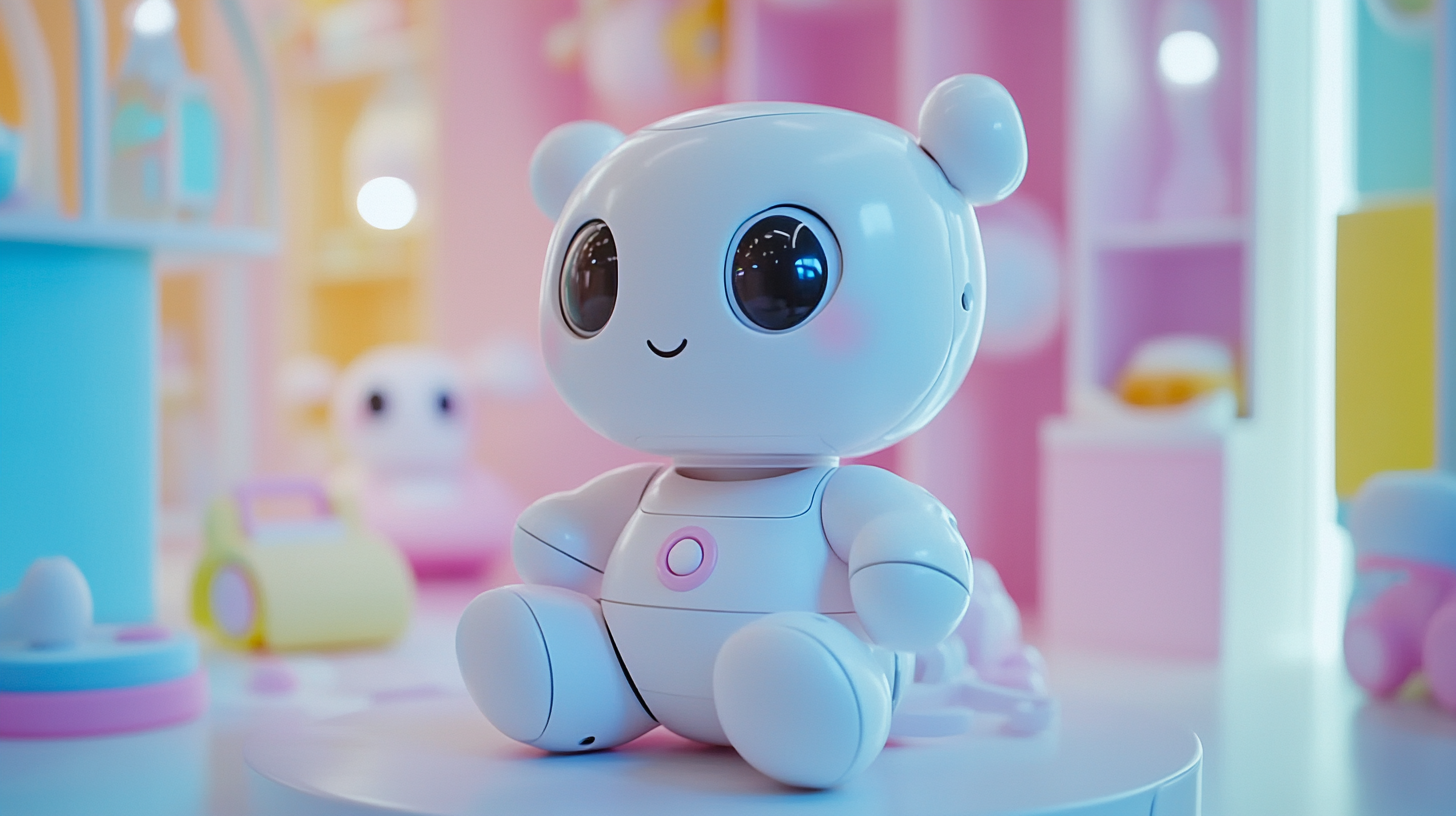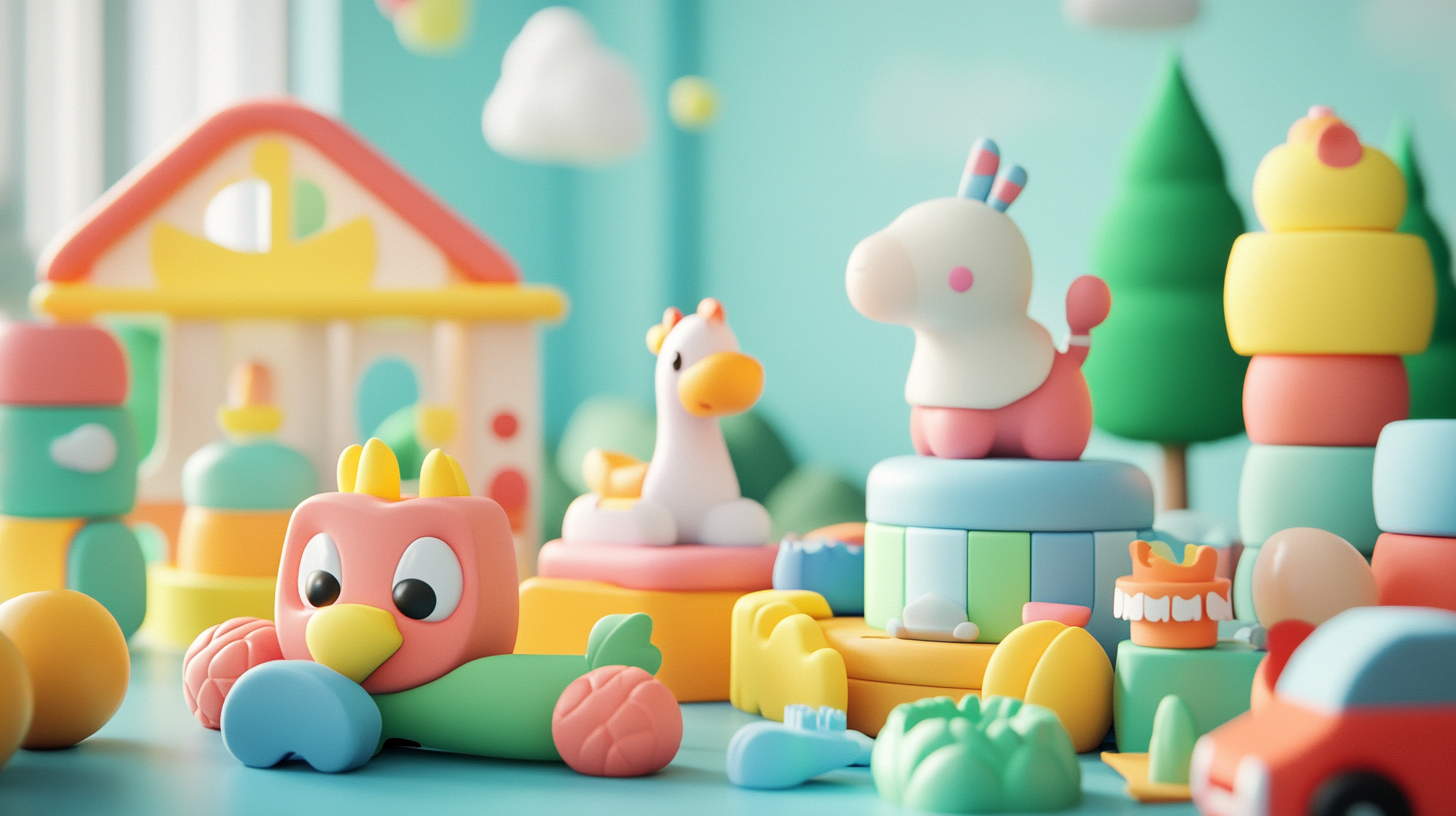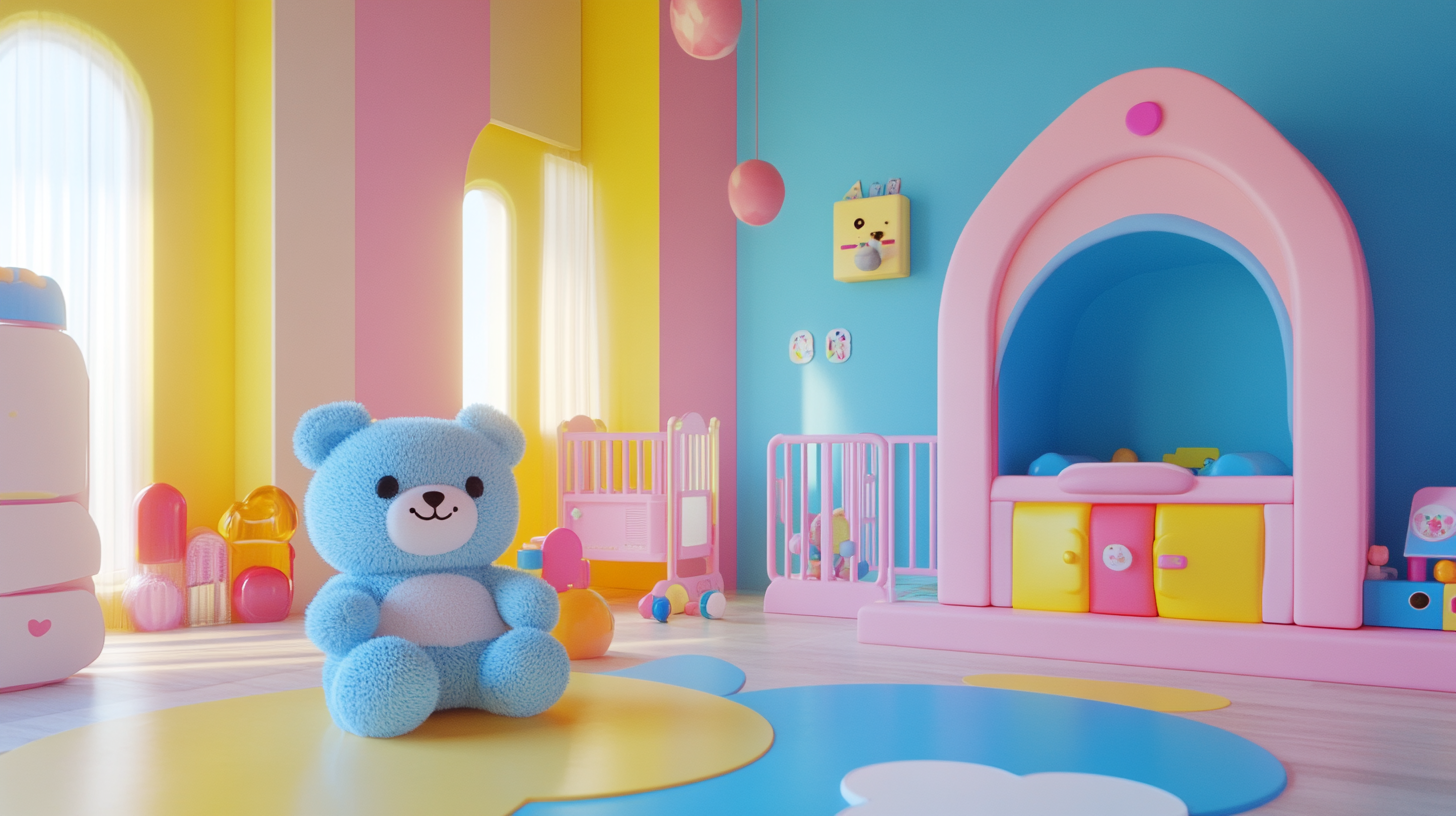In the ever-evolving landscape of the toy industry, Baby Toy Brands are increasingly influenced by a set of industry standards aimed at enhancing safety, sustainability, and educational value. As parents become more discerning about the products they choose for their children, these standards play a crucial role in guiding brand practices and consumer choices. Companies that align their strategies with these industry benchmarks not only bolster their credibility but also ensure that they meet the high expectations of modern families.
Understanding these standards is essential for anyone involved in the baby toy market, from manufacturers to retailers and consumers. This blog will explore five key industry standards that are shaping the future of Baby Toy Brands and examine their significance in fostering safe and enriching play experiences for infants and toddlers. By adhering to these standards, brands can cultivate trust with parents, contribute to child development, and ultimately thrive in a competitive marketplace.

The rise of sustainable materials in baby toy manufacturing is not just a trend; it is becoming a pivotal standard that shapes the future of the industry. According to a report by Grand View Research, the global eco-friendly toy market is expected to reach $1.7 billion by 2025, growing at a remarkable CAGR of 9.5%. This shift is predominantly driven by environmentally conscious parents who prioritize safe and sustainable products for their children. As regulations tighten around toy safety and environmental impact, brands that embrace sustainable practices are positioning themselves at the forefront of consumer preference. Sustainable materials, such as organic cotton, biodegradable plastics, and responsibly sourced wood, are gaining traction. A study by the Toy Industry Association found that 75% of surveyed parents expressed a preference for toys made from sustainable resources. This increasing demand not only reflects a growing awareness of environmental issues but also an educational opportunity for children. By introducing kids to sustainable toys, manufacturers can instill early values of conservation and responsibility. Moreover, manufacturers are innovating by incorporating recycled materials into their products. A notable example is the initiative by some leading toy brands that have begun creating lines of toys made from post-consumer plastics. The European Union's Plastic Strategy, aimed at reducing plastic waste, is further accelerating this movement. As the industry adapts to these standards, brands committed to sustainability are not just meeting consumer demands; they are also contributing to a broader movement towards a circular economy and environmental stewardship.

When it comes to choosing toys for our children, safety should be a parent's top priority. Recent revelations underscore the importance of compliance with toy safety standards, ensuring that the toys our little ones cherish meet rigorous safety criteria to prevent accidents and injuries. Each plaything, whether it’s a plush animal or an interactive toy, should pass strict evaluations to protect tender hands and curious minds.
In several regions, such as the United States and the European Union, toy manufacturers are obligated to adhere to established safety regulations. These regulations not only include requirements for materials and construction but also enforce labeling practices that provide crucial information to consumers. For instance, the failure to display battery warnings on children's toys recently resulted in significant penalties for a fast-food chain, illustrating the consequences of non-compliance.
Toy safety compliance is not merely a regulatory burden; it reflects a commitment to protecting our children. As toys evolve in complexity and design, parents must stay informed about safety standards and advocate for products that meet these essential guidelines. By doing so, we ensure that playtime remains a safe and nurturing experience for young learners.

The world of baby toys is rapidly evolving, with innovative design trends that prioritize developmental growth at the forefront. Today’s parents are more discerning than ever, seeking toys that not only entertain but also foster skills like cognitive development, motor skills, and social interaction. Brands are focusing on creating multifunctional toys that engage children through active learning experiences, employing materials and designs that stimulate the senses and support various stages of growth.
One notable trend is the emphasis on eco-friendly materials and sustainable practices. Parents are increasingly concerned about the environmental impact of the products they choose, pushing brands to adopt greener alternatives. This not only benefits the planet but also teaches children the importance of caring for their environment from an early age. Additionally, many toys are designed to grow with the child, incorporating elements that can be transformed or expanded to remain relevant as the child develops.
Furthermore, toys that promote sensory exploration are becoming more popular. These include textures, sounds, and interactive features that encourage babies to explore and engage. Some brands are integrating technology into their toys, creating interactive experiences that can adapt to a child's learning pace. This blend of technology and traditional play reflects a crucial shift in how toys are designed, making them not just tools for play but essential instruments for developmental growth. As these trends continue to shape the industry, the focus will remain on toys that support a child's holistic development while being fun and engaging.

In the rapidly evolving landscape of baby toys, technology plays a pivotal role in shaping the future. As parents increasingly seek toys that not only entertain but also educate, innovative concepts like STEM (Science, Technology, Engineering, and Mathematics) have gained significant traction. According to a recent industry report, the global market for educational toys, particularly those focused on STEM principles, is projected to reach $5.8 billion by 2025, reflecting a 10% annual growth rate. This surge underscores the rising interest in toys that foster early learning and cognitive development.
Moreover, the integration of technology in baby toys has ushered in a new era of interactive play. Smart toys equipped with sensors, AI, and connectivity features are becoming increasingly popular. These gadgets not only engage children through dynamic content but also provide valuable data insights to parents about their child’s learning progress. A survey indicates that 68% of parents are willing to invest in tech-enabled toys that offer educational benefits, illustrating a shift in consumer preferences towards intelligent play experiences.
Sustainability and inclusivity have also emerged as key factors shaping the future of baby toys. Brands that utilize eco-friendly materials and promote diverse narratives are better positioned to resonate with today’s socially conscious consumers. As reported by the Toy Industry Association, 75% of consumers are now prioritizing environmentally friendly products. This demand for sustainable toys encourages manufacturers to innovate responsibly, designing products that not only entertain but also contribute positively to the environment and society.
In the evolving landscape of the baby toy industry, parental influence has become a pivotal force driving market standards. As consumer awareness grows, parents are not only choosing toys based on their child’s enjoyment but also on safety and developmental benefits. Recent recalls of baby and toddler products underscore the need for stringent safety measures, as highlighted by the U.S. Consumer Product Safety Commission's ongoing vigilance. These incidents have heightened parents' scrutiny concerning the brands they support, fostering an environment where only the most reliable and safe toys can thrive.
The baby products market is projected to reach USD 575.8 billion by 2033, growing from USD 321.5 billion in 2023. This significant growth trajectory reflects a rising consumer expectation for quality and safety in baby products, with a 6% CAGR forecasted. As a result, brands are increasingly prioritizing adherence to industry standards that not only meet safety regulations but also cater to the educational value of toys. STEM toys, for instance, are gaining traction as they promise both fun and learning experiences, aligning with parents’ desires to foster cognitive development in their children.
Understanding the dynamics of consumer awareness can empower parents to become more proactive in their choices. As they demand higher quality and safer products, manufacturers must adapt and innovate, integrating feedback into their designs and marketing strategies. The interplay between parent advocacy and market standards is shaping a promising future for baby toy brands that prioritize the well-being of children while meeting the evolving expectations of modern consumers.
